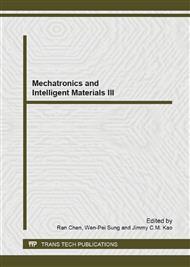p.1222
p.1226
p.1231
p.1237
p.1241
p.1246
p.1250
p.1254
p.1258
Characteristics of Vehicle Tire Tread Pattern and its Application in Forensic Science
Abstract:
Vehicle tire tread pattern is an important part of vehicle tire and also an important object concerned by the police workers who want to deduce or identify the suspected vehicle tire through the tire pattern impression left on the crime scene, which is routinely reflected by tire pattern impression on the surface tire rolled through. In this paper, the characteristics of vehicle tire pattern and its application in forensic science was analyzed and summarized in accordance with cases, based on the analysis of the process of production and using. The research indicated that the tire pattern not only has type characteristics corresponding to vehicle type, but also may have some new individual characteristics in the process of production and using in special condition. The morphological characteristics of tire pattern can be reflected more or less by the tire impression which left on road, clothes or body skin. With the development of trace extraction and enhancement technology, the morphological characteristics of tire pattern in tire impression will be used to deduce vehicle type or identify the suspected vehicle tire, which will play an important role in forensic evidence.
Info:
Periodical:
Pages:
1241-1245
Citation:
Online since:
June 2013
Authors:
Price:
Сopyright:
© 2013 Trans Tech Publications Ltd. All Rights Reserved
Share:
Citation:


